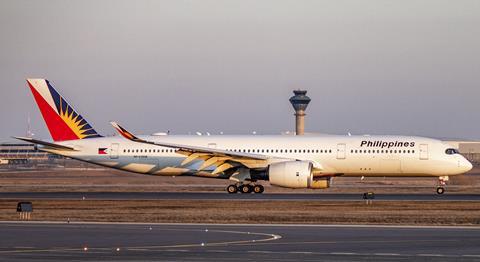Philippine Airlines parent PAL Holdings saw first-quarter profits decline on the back of cost pressures, but notes that this was “an expected outcome” as travel demand normalises.
For the three months to 31 March, the company reported an attributable net profit of Ps3.6 billion ($62.8 million), down 23% year on year. This was despite a 8.5% increase in revenues, to Ps45.8 billion, led by an increase in passenger travel revenue, which grew about 7% year on year.

Still, the rise in revenue was outpaced by a 13% jump in operating expenses, to Ps39 billion, as the airline increased flying activity. PAL also flagged “the continued industry-wide price hikes” in areas such as maintenance and ground-handling.
PAL president Stanley Ng also notes that supply chain challenges “remain and continue to put a strain” on airline operations.
Still, he adds: “Our positive bottom line confirms that we are on track with our growth strategies, in the areas of fleet growth, route network expansion and service innovations.”
PAL has set aside some $73 million during the quarter as capital expenditure: these include pre-delivery payments for Airbus A350-1000s which it ordered in 2023, as well as “other aircraft-related requirements”.


























